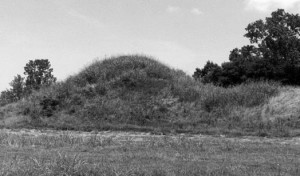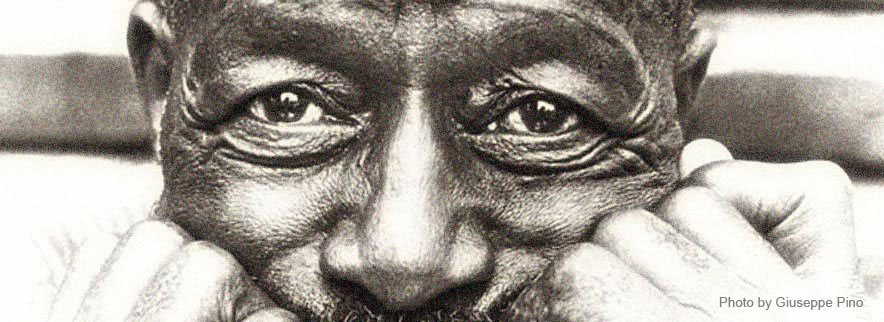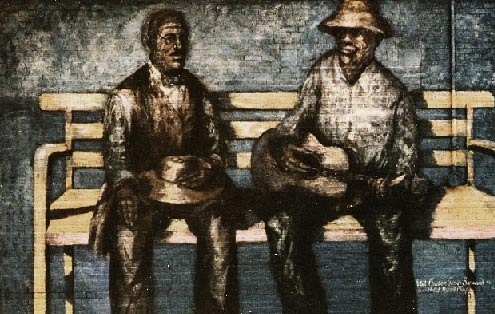Many places in the Southern states claim the title of birth place of the blues. Memphis, Clarksdale, New Orleans, Texas… In the most spread collective image the cradle of the blues stands in the Mississippi Delta. The fact that the self proclaimed father of the blues, W.C. Handy, was unfortunate to be stuck in the Tutwiler station waiting on a train hours late on schedule – a train headed (presumably) to Clarksdale – has only contributed to the persistence of this image. W.C. Handy tried to catch some shuteye when he noticed that a “lean, loose-jointed Negro had commenced plucking a guitar” beside him while he slept. His weird song “Going’ where the Southern Cross’ the Dog” left an unforgettable impact on him. The tune kept on rambling in his mind.
This story that supposedly happened in 1903 belongs to the text book historical narratives of the blues. But why do we focus on Tutwiler and the (for us) happy fact that the train was running behind schedule? Probably, because it has so many romantic aspects, speaks to our imagination and …because W.C. Handy made himself tremendous efforts to promote his story. There is however a problem with the claim that he had a ‘first’. This succinct post serves no other purpose than to help us remind that two years earlier some academic had already been struck by the same kind of weird music. To be more precise, on May 11, 1901, Harvard archaeologist Charles Peabody arrived at Coahoma County to conduct a seven-week excavation season at the plantations in Clarksdale and in Oliver. His archaeological work focused on mounds of the Choctaw people (river people), a Native American people who lived throughout the east of the Mississippi River valley and its tributaries. His attention went to their mounds, artificial hills (“tumulus” in European terminology) related to ritual, power and burial customs. The excavations required strenuous work for which he hired African American workers. His attention was caught by their repetitive and mesmerizing chants. It is said that what they sang at night interested him particularly, because it was improvised rhythm with “hard luck tales” for lyrics. 
The observation that his transcription of the songs and his ‘Notes on Negro music’ (1903) were published before his archaeological findings (1904) illustrates the profound effect that his worker’s chants must have had on him. In his words, the chants were “Quite impossible to copy, weird in interval and strange in rhythm; peculiarly beautiful”.
However, just has W.C. Handy’s story needs some historical annotation, so do we need to make some critical remarks to Charles Peabody’s place in history. The earliest direct reference (other than by recollections) to what might be considered blues was made already a decade earlier, in 1890 by a collector named Gates Thomas, who transcribed a song titled “Nobody There.” Place of occurrence: South Texas. Thomas gives no indication whether the singing was accompanied by an instrument, but he does quote that it was a pentatonic tune containing tonic, minor, third, fourth, fifth, and seventh chords. In combination, this resembles to something like a blues tune (David Evans).
I need to add from my side that (as Karl Hagstrom Miller also indicates) the prudence in this historical reading needs even to go further and should guard us from concluding that what Thomas, Peabody or Handy heard where the exclusive musical expression of the African Americans they met. As I have repeatedly stated in previous posts, the origins of the genre that would later become to be known as blues cannot be analysed along the sole dimension of race. The colour line that was drawn in the musical spectrum of blacks and white was not present as such in the early musical-historical environment out of which blues and jazz would be born. Miller points out that Peabody was aware of the fact that his African American workers also knew songs that had been recently composed in New York, and that they could also sing them. However, in a perfect human reaction, Peabody was mainly if not exclusively struck by the ‘new’ and ‘weird’ sound and paid little or no attention to what he was accustomed to hear as popular music.
This makes we wonder whether perhaps W.C. Handy slept through a popular song that the ‘loose-jointed Negro’ might also have played in the Tutweiler train station, but that only the “weird” song woke him up. Just a speculative thought of course…..but a tempting one, no?
SOURCES
_________
http://www.tshaonline.org/handbook/online/articles/xbb01
http://sanangelobluessociety.com/blues-talk/
http://www.associatedcontent.com/article/736919/the_american_blues_movement_a_brief.html
David Evans, Big Road Blues : tradition and creativity in the folk blues
Karl Hagstrom Miller, Segregating Sound



Beyond mounds. Charlie Patton: half-Choctaw. Howlin’ Wolf: one quarter Choctaw.
[…] Continue Article Here… http://www.myblues.eu/blog/?p=1308 […]